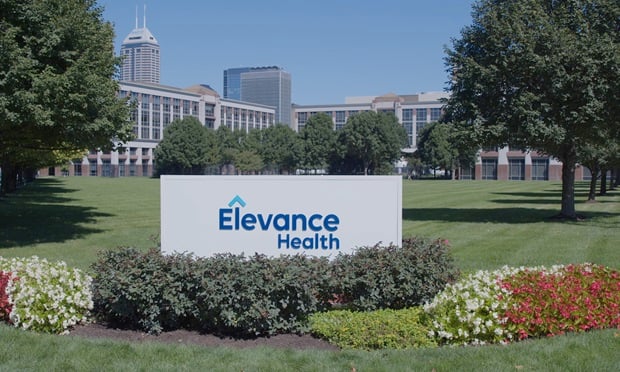Keep on moving. There's nothing to see here.
That appears to be the collective opinion of dental insurance providers and brokers after a dust-up last fall over the inclusion of dental-only customers as part of overall enrollment numbers under the Patient Protection and Affordable Care Act. Proponents called the figures an honest error, while opponents accused government officials of padding the numbers.
The American Dental Association said the discrepancy is not an issue, because the organization believes that oral health is health care, and dental insurance enrollments are up.
Kevin Coleman, director of research and data for HealthPocket in Sunnyvale, Calif., said the problem has been addressed.
"After confirmation that the exchange medical plan enrollment numbers were inflated through the inclusion of stand-alone dental plans, Health and Human Services Secretary Sylvie Burwell pledged to take steps so that `this kind of mistake does not occur again after we understand why it happened',” he said. "We have not heard of what specific steps were taken within HHS to prevent a recurrence of this error."
Disputed numbers
A Congressional Budget Office projection that seven million Americans would secure coverage last year likely triggered the confusion. In September, federal officials announced that 7.3 million people had enrolled in coverage through new government-run insurance exchanges. However, this announcement didn't follow standard practice of distinguishing between medical and dental plans.
The enrollment numbers sounded too coincidental for researchers on the House Oversight and Government Reform Committee. They compared the data with numbers from the U.S. Centers for Medicare and Medicaid Services. Committee staff found that nearly 400,000 of the enrollments were for stand-alone dental plans. Subtracting these from total enrollments would have dropped total enrollment just below the goal of seven million.
HealthPocket, which maintains and analyzes PPACA data, determined that 243 of 299 plans that the committee singled out, with enrollment of more than 399,000 people, were for dental care.
Without them, enrollment in medical plans fell from 7.37 million to 6.97 million as of Aug. 15, 2014. Coleman said he was unable to verify the remaining 56 plans as dental. However, he said, some of their ID numbers are in “close sequence” to confirmed dental plans, which implies they also cover only dental care.
"The 2014 enrollment data research by HealthPocket was performed on Plan ID information (stripped of all personally identifiable information) collected by the House Oversight Committee and then shared with HealthPocket for independent analysis," he said.
So what?
The discrepancy is one more reason to distrust the ACA, according to Darrell Issa (R-Calif.), who chaired the committee at the time.
"After touting eight million initial sign-ups for medical plans, four months later they engaged in a concerted effort to obscure the heavy drop-out rate of perhaps a million or more enrollees by quietly adding in dental plan sign-ups to exchange numbers," he said in a statement last fall.
After initially providing the 7.3 million number to the committee, Marilyn Tavenner, administrator for the Centers for Medicare and Medicaid Services, corrected herself in a Nov. 20 letter to Issa:
A mistake was made while calculating the number of individuals with effectuated marketplace enrollment. While there were 7.3 million effectuated enrollments, approximately 393,000 individuals had both marketplace medical and dental coverage as of Aug. 15, 2014. As a result, these individuals were inadvertently counted twice in the individual effectuated enrollment numbers. The number of individuals enrolled in medical coverage plans was approximately 6.9 million as of Aug. 15, 2014.
For her part, Secretary Burwell sent a tweet that said: "The mistake we made is unacceptable. I will be communicating this clearly throughout (the department)." In a separate Facebook chat, she said, "While we understand that some will be skeptical, our clarity that this is a mistake and the fact that we have quickly corrected the numbers should give people confidence."
No broker impact
This governmental squabble has stayed largely inside the Beltway. Phone calls to dental insurance brokers from California to Wisconsin to Georgia found either no knowledge of or no interest in the issue. They are going full speed ahead on working with employers and individual customers as usual.
With the new Congress, Issa has moved on from the House Oversight and Government Reform Committee, which is now chaired by Rep. Jason Chaffetz (R-Utah). HHS promises new systems to prevent a repeat of the problem.
"Moving forward, only individuals with medical coverage will be included in our individual effectuated enrollment numbers," Tavenner said in her letter. "In addition, once the automated system for effectuated enrollment is functional, the Centers for Medicare and Medicaid Services will be able to more easily report who has paid their premiums."
The conflict appears to be over, at least until researchers dig into 2015 enrollment numbers. As many children have told their parents and teachers, nothing happened -- and even if it did, it won't happen again.
Complete your profile to continue reading and get FREE access to BenefitsPRO, part of your ALM digital membership.
Your access to unlimited BenefitsPRO content isn’t changing.
Once you are an ALM digital member, you’ll receive:
- Breaking benefits news and analysis, on-site and via our newsletters and custom alerts
- Educational webcasts, white papers, and ebooks from industry thought leaders
- Critical converage of the property casualty insurance and financial advisory markets on our other ALM sites, PropertyCasualty360 and ThinkAdvisor
Already have an account? Sign In Now
© 2024 ALM Global, LLC, All Rights Reserved. Request academic re-use from www.copyright.com. All other uses, submit a request to [email protected]. For more information visit Asset & Logo Licensing.








